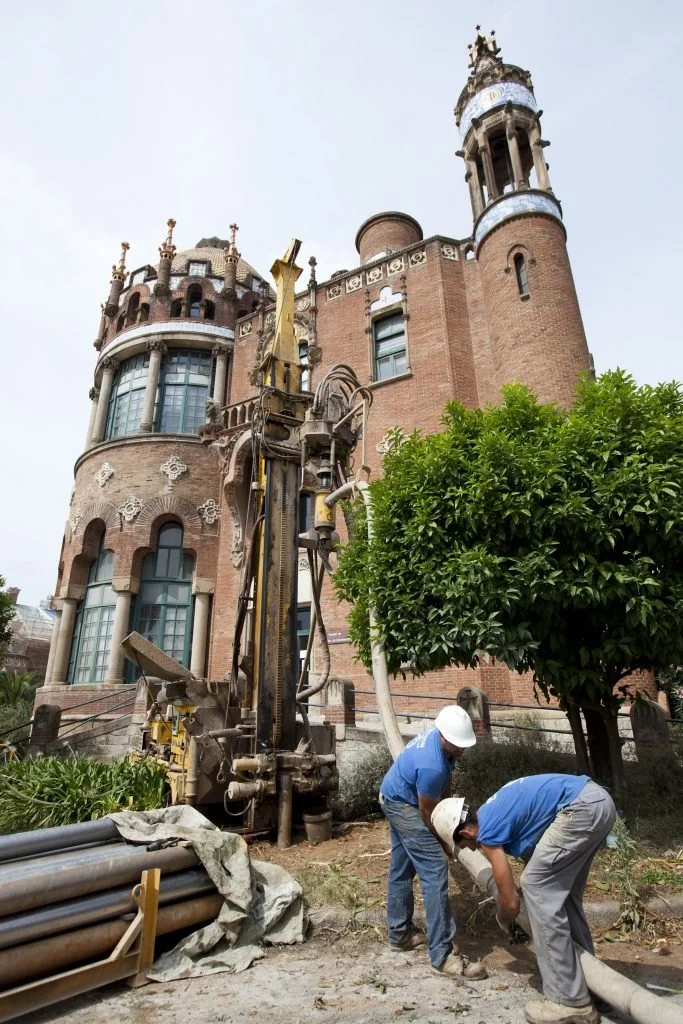Sant Pau (Barcelona) Transforms Heritage with Geothermal Energy
With over 600 hundred years of history, the Sant Pau Hospital is now living proof that historic buildings can be renovated without visual impacts, all thanks to geothermal energy!
The largest Art Nouveau complex in the world and a cultural landmark for the city of Barcelona, the Sant Pau Hospital started off as a welfare house in the 15th century and was converted to a modern hospital complex between 1905 and 1930. Known as the “city within a city”, it extends over 13.5 hectares occupying 9 blocks in Barcelona’s Eixampledistrict and is a UNESCO World Heritage Site.
In 2009, the site underwent meticulous restoration to become a museum and cultural centre. Throughout this process, the Sant Pau Foundation remained firm on its sustainability commitments and went to geothermal energy for the heating and cooling of the Sant Pau Hospital.
A one-of-its-kind system
In 2012, the Sant Pau Hospital installed the largest geothermal energy production complex in Southern Europe. 400 wells of different depths – reaching 120+ meters deep – power geothermal heat pumps across the buildings, saving over 30% of the electricity consumption compared to conventional energy supply systems. This led to a reduction of 4,200 MWh/year of energy and 486 tons of CO2 per year.
The nature of the geothermal system – operating silently underground and avoiding the need for radiators and air conditioning – makes it a perfect solution for the artistic site, preserving heritage spaces and preventing visual pollution.
Worldwide recognition
The energy savings from the geothermal system earned this monument six Leed certifications (Leadership in Energy and Environmental Design) from the US Green Building Council, making it the only UNESCO World Heritage Site with this distinction.
Technical Details
400+ boreholes
Different depths, reaching over 120 meters deep
Energy savings of over 30% (reduction of 4,200 MWh/year)
CO2 savings of 468 tons per year
IDEA, the Spanish energy agency, provided €4.1 million to the project


